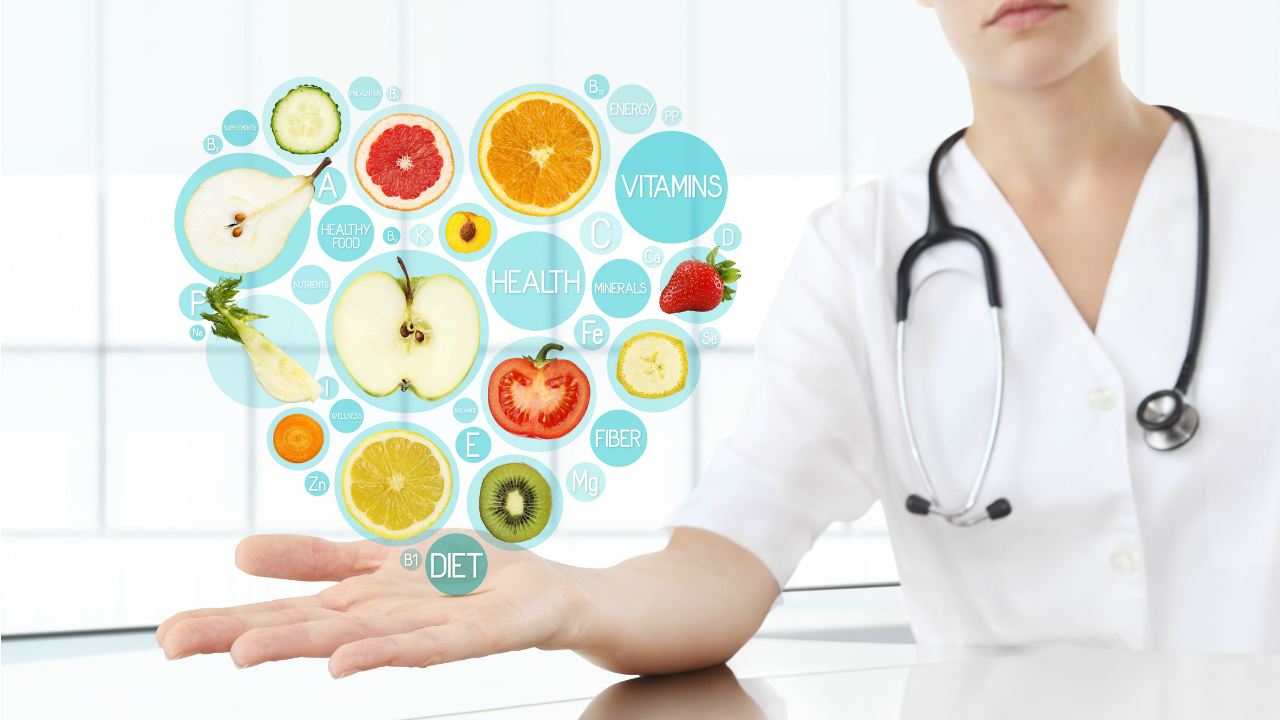Do this one thing to crush your chance of developing cancer by 20% to 30%!
Did I get your attention? You can make a difference simply by increasing your fruit and vegetable intake. Studies have repeatedly demonstrated a connection between the two. Lifestyle factors such as body fatness, nutrition intake and excessive alcohol consumption are related to at least 20% of cancers diagnosed in the United States. So let’s take a look at how we can improve our produce intake to promote cancer prevention.
We live in a world where we are hooked by media headlines looking for an easy way to improve our health…. the one miracle food, powder, or pill. Society has embraced a lifestyle of convenience.
Add into the mix technology and misinformation and you wind up with half of the population exceeding grain, protein, sugar, saturated fats, and sodium recommendations. It’s no wonder that obesity is now the second leading risk factor for cancer.
With our plates piled high of the wrong kinds of foods, there is little room left for the right kind: fruits and vegetables. According to a study published by the Center for Disease Control, only 1 in 10 adults meet the fruit or vegetable recommendation of eating at least 1 ½ -2 cups of fruit and 2 -3 cups of vegetables per day. Seventy-six percent of adults did not meet fruit intake and eighty-seven percent did not meet vegetable intake.
Our children aren’t doing so well either with sixty percent not meeting fruit and a whopping ninety-three percent not meeting vegetable recommendations.
Consequently, we’re missing out on the essential vitamins, minerals, and fiber that fruits and vegetables provide. We are paving a path for chronic disease for ourselves and our children.
As a registered dietitian, I speak to clients who reflect these statistics. They struggle with the motivation to even want to increase their produce intake. Their taste buds have been highjacked by sugar, fat and salt.
That’s the bad news.
But there is good news: It’s not too late and it doesn’t have to be hard!
If you are serious about having a tremendous impact on your health, including losing weight, preventing cancer, and staving off chronic diseases that are characterizing our nation, then it’s time to make fruits and vegetables a priority.
Why Choose Fruits and Veggies to Beat Cancer?
Phytochemicals and Immunity. Research shows that vegetables and fruits protect against a range of cancers, including mouth, pharynx, larynx, pancreatic, esophagus and lung. Not only do they contain immune boosting vitamins and minerals, they are also good sources of substances like phytochemicals. Phytochemicals are biologically active compounds that help protect cells in the body from damage that can lead to cancer.
Phytochemicals can also help with inflammation. An inflammatory environment promotes cancer development and recurrence. Phytonutrients, however, may diminish inflammation, thereby reducing cancer cell growth and metastasis. One observational study examined 3,000 breast cancer patients in order to evaluate breast cancer recurrence risk and intake of a class of phytochemicals called carotenoids. Carotenoids are compounds found in dark leafy greens and bright orange and yellow veggies and fruit. The study found that women with the highest blood levels of carotenoids had the longest cancer-free survival rates.
Fiber. Foods containing fiber are also linked to a reduced risk of cancer. These foods include fruits, vegetables, beans, and whole-grains. Fiber has many benefits, including helping speed up the time it takes food to move through the digestive system (known as “gut transit time”), which may help prevent colon cancer.
Satiety. Plant foods can help you maintain a healthy weight because they are low in calories but high in fiber and water content, which helps increase satiety.
Nature’s Dessert. Despite what you’ve heard, fruits and vegetables should not be avoided solely because of their high sugar content or because they rank high on the glycemic index. I have to dispel this myth with my clients on a daily basis.
You can enjoy the sweetness of produce guilt free, as their benefits far exceed the empty calorie, high sugar content of the cookies, candy, and sodas people are eating in their place.
Just in case you missed that, let me repeat: fruits and veggies are NOT the problem.
Turning Knowledge into Action
If you’re unsure where to start, my recommendation would be, “somewhere.” I love the saying, “You will never change your life until you change something you do daily. The secret of your success is found in your daily routine.” A good first step would be to choose at least one fruit or vegetable at each meal or snack every day. Give yourself a little grace if you mess up at first, just don’t exploit that grace or let your struggle become your excuse.
After you’re consistently having produce at every meal and snack, it’s time to move on to the half plate concept.
The Half-Your-Plate Concept
The simpler something is, the more likely it will be implemented. That’s where the “Half Your Plate” concept comes in handy.
Stop worrying about what constitutes a serving of broccoli, how many baby carrots are in a cup, or if you should eat ½ a banana or a whole. Half banana, or a whole.
Make it easy: fill half your plate with fruits and vegetables at each meal. Making fruits and vegetables the focal point of every meal will help you meet your recommended amount each day—and you won’t have to do all the math!
For those type-A personalities out there that prefer to track your intake, then challenge yourself for 5 cups of fruits and vegetables a day. But again, if you fill ½ your plate, you’ll be golden.
6 Tips to Help You Eat Your Fruits and Veggies
#1) Plan For It
Control your environment. We eat what is visible and available. So get more fruits and vegetables in the house and make them front and center. Choose a variety of fresh, frozen, and even low sodium canned produce. This will ensure a good assortment, prevent waste, and keep you from making last minute trips to the grocery.
#2) Try New Things
Buy a new fruit or vegetable every time you go to the grocery store. Get the kids involved in choosing the new one to try each week.
Also, try new methods of cooking. I’m amazed at the number of people that have only tried canned asparagus. Or overcooked green beans. They’re missing out on how wonderful fresh roasted asparagus can be or fresh green beans sautéed with garlic and herbs. This can really be a difference maker in how you like the varieties of different vegetables.
Need some recipe ideas? Visit Fruitsandveggiesmorematters.org for an abundance of ideas for recipes, storage, and buying tips. Variety matters not only in your nutrient intake but in also keeping you from getting tired of the same old stuff.
#3) Store It
Put produce at eye level in the fridge, in a bowl right on the kitchen counter, or your desk at work. That way, you’ll alays have something handy.
Make a bean salad loaded with veggies to add to your lunches for the week. Keep a fruit salsa on hand to have to top grilled fish or to add to your salads. Convenience is a huge predictor in our consumption! So store smart!
#4) Pack It
Pack pre-cut produce in snack size bags or plastic containers to have easy grab and go options to take with you. Keep an orange, apple, or banana in your car to have “just in case.”
#5) Eat It
Enjoy fruits and vegetables simply or look for ways to include them in entrees and side dishes.
- Add chopped squash, mushrooms, onions, or carrots to your marinara sauce
- Toss handfuls of spinach into stews and soups
- Make a veggie frittata with spinach, onions, roasted red peppers, and asparagus or add to your scrambled eggs or omelets
- Roast veggies to keep on hand to add to your lunch salads
- Add fruits and veggies to your smoothies
- Freeze grapes and berries in single-serving freezer containers for a cool treat during summer months
Heck, you can even sneak produce into your food and your kids will never know.
#6) Make It Fun
Everybody Loves a Challenge. Crush cancer with a color challenge! Have a contest with family or co-workers: 5 different colors and 5 fruits or vegetables a day for 5 days.
Conclusion
Decades of research and evidence-based medicine demonstrate that choosing meals designed around plant foods helps reduce your risk of cancer.
Will you choose to make fruits and vegetables a priority?


